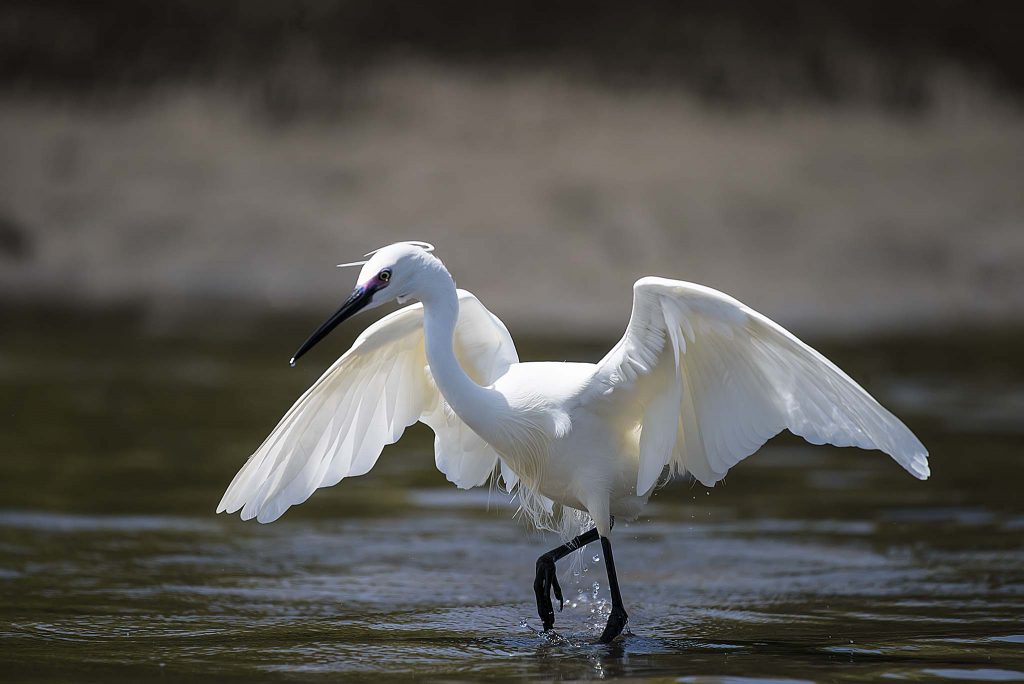The area of Cotton Tree is generally bounded by the Maroochy River and Cornmeal Creek to the north and to the south and west by Aerodrome Road and by the Pacific Ocean to the east.
The area takes its name from the Hibiscus tiliaceus plant which is also known as Coastal Cotton tree or Cottonwood. Many of these trees are still visible near the caravan park and near the old creek near Fourth Avenue.
Cotton Tree is a very beautiful spot with beautiful sandy tracts near the river entrance and on the ocean side.
There are two main islands near the river entrance, Goat Island and Channel Island joined by a sandy tract with a smaller island, Pincushion Island just outside the river entrance. Goat Island and Channel Island are an excellent haven for water birds around the sandy and mangrove shorelines.
The first image is from the vicinity of the Cotton Tree caravan park showing the jetty on the Maroochydore River.
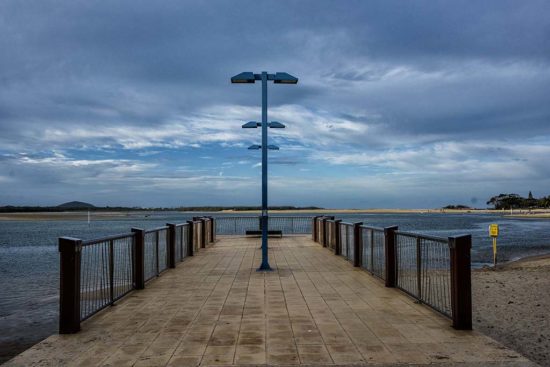
The image below is of the sea wall erosion protection barrier by sand bags at the river entrance.
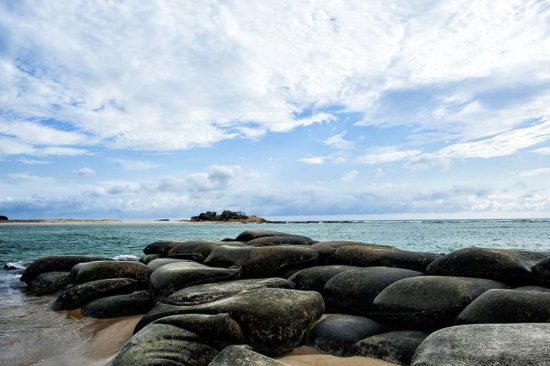
The shorelines around the river entrance and the islands is excellent for kayaking and I spent many hours chasing the birdlife in my Hobie Outback. Many birds are plentiful around the shoreline, Pied Oyster Catchers were plentiful around the tidal flats and there are two images below of these beautiful birds.
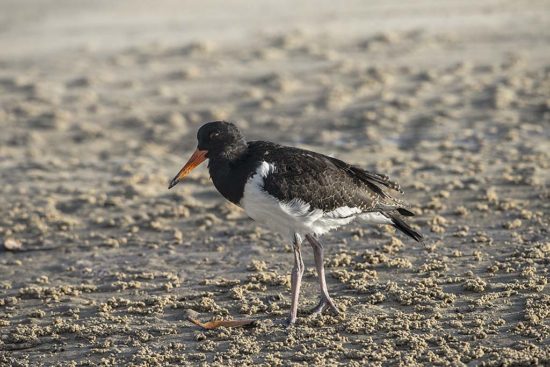
I was able to catch the The Pied Oystercatcher in the below image just as it was taking off.
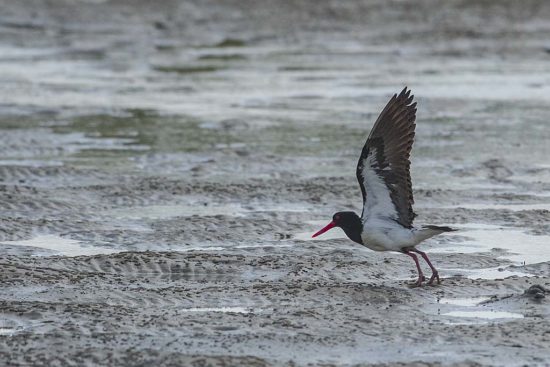
There were also plenty of Crested Terns
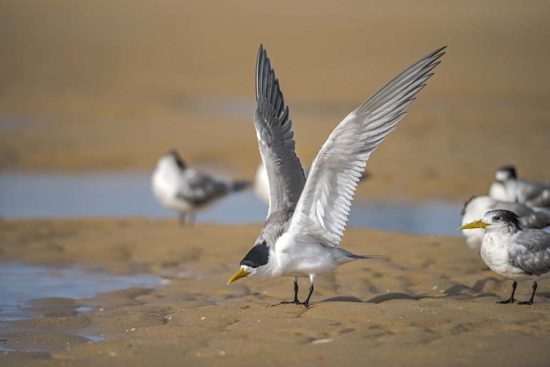
Even around the Cotton Tree caravan park itself, there were birds and this is where the juvenile Pied Butcherbird in the image below was captured.
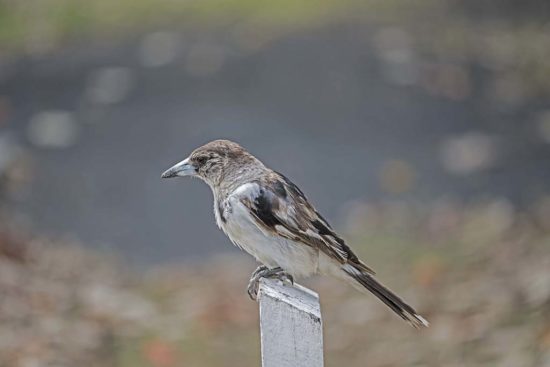
One of the highlights of my kayaking in this are was watching a Pied Cormorant for a considerable time. He kept diving down and surfacing in a different spot. I kept watching him and eventually he came up with a large fish, a flounder. He fought the fish for some time but unluckily for him, the fish finally escaped and he went without his meal.
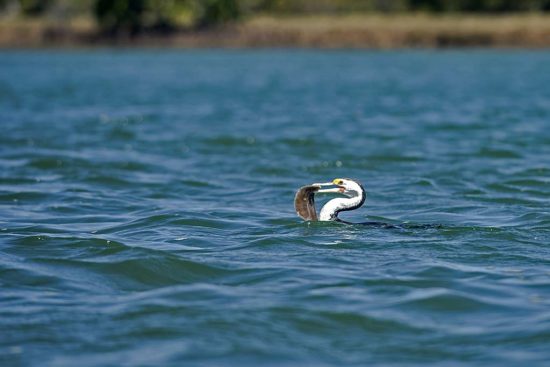
That is the general luck when fishing, there is always the sad story of the one that got away.
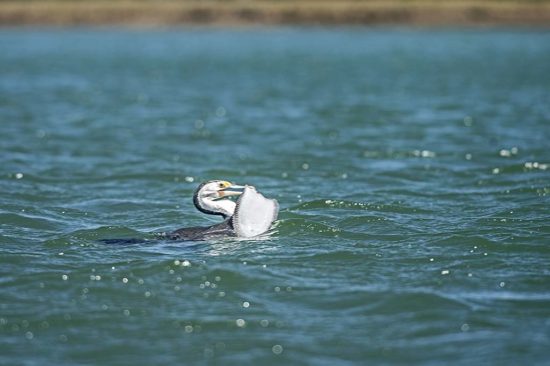
I was fortunate to see an Intermediate Egret in its full breeding plumage.
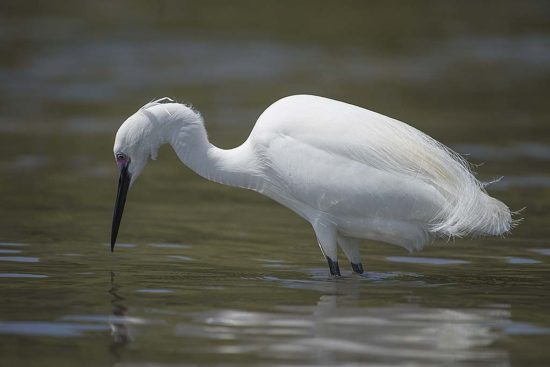
In the image below the Egret is doing a nice dance in front of me all dressed up in his breeding -plumage.
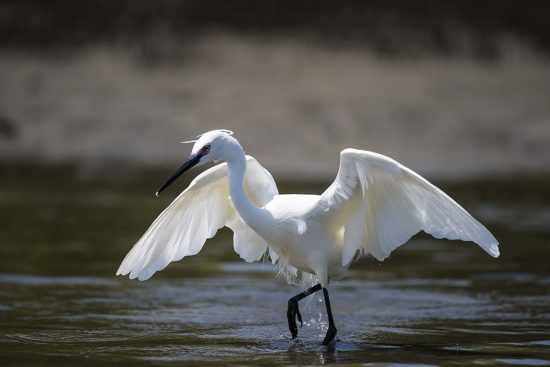
Below is a White Faced Heron looking for a tasty morsel hidden in the sand flats.
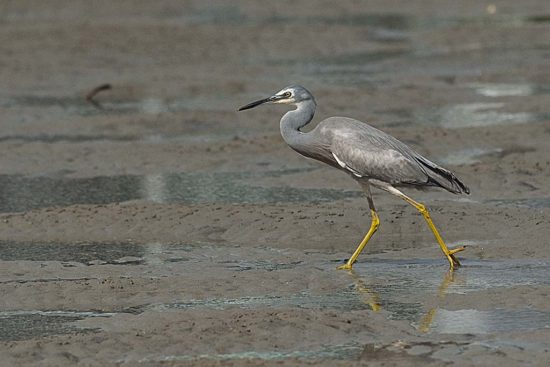
In the image of the two Pied Cormorants below I liked the way the two birds were looking in the same direction and they seemed to be oblivious to me approaching in the kayak.
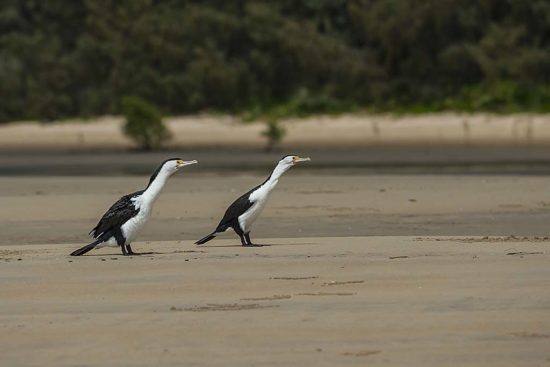
There are plenty of Pelicans here and I was amused to see this group of Pelicans all preening themselves in unison.
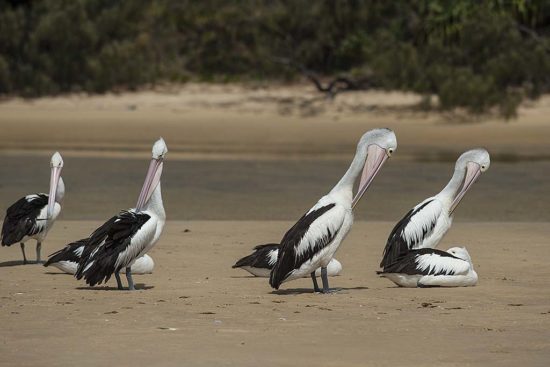
A beautiful Nankeen Night Heron perched nearby on a branch for a convenient photograph.

There was on occasions a flock of Sandpipers in one area and managed to get a nice image.
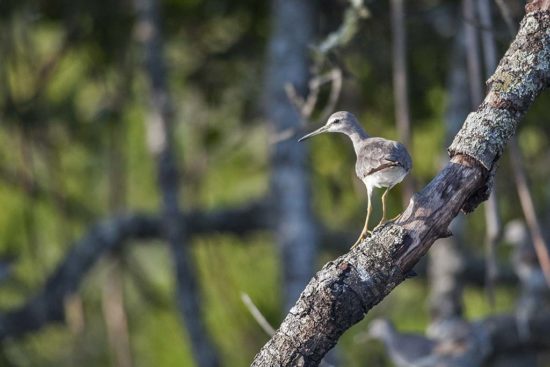
For the above top two seascape images I used the Nikkor 28mm f/1.8G lens and for all the above bird images I used either the Nikkor 200-500mm f/5.6E lens or the Nikkor 300mm f/4D lens with a D810 camera for all images.
Generally I do prefer the 200-500mm lens for bird photography due to the extra reach of the lens but the 300mm lens is much lighter and easier to handle. Initially I thought the 200-500mm lens was too heave to handle in the kayak and prefered the 300mm, however with time I am getting more used to the large 200-500mm lens and am starting to use it much more in the kayak.
If you do get involved in kayak photography make sure you use one of the water proof cases such as one of the pelican cases or the vanguard cases. I use one of the vanguard cases and find it very good. Sometimes the water roughs up and I need to put the camera away in the case for protection, it is not worth subjecting your expensive camera gear to be exposed to salt spray.
The equipment I recommend for my photography is as follows and all can be purchased at B&H.

